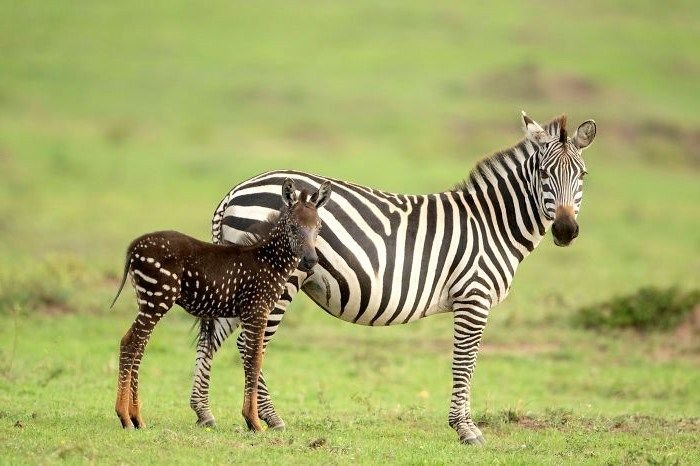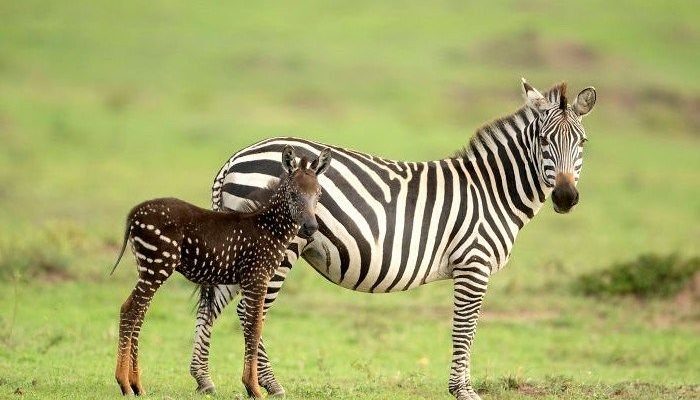
Imagine sitting in a coffee shop with a friend, chatting about how zebras got those iconic stripes. What if I told you it’s not just for looks? Understanding their evolutionary background is like flipping through a history book—each page tells us how these animals adapted to their environment over millions of years. So let’s dive into the story of the zebra, exploring where they came from, what makes them special, and why their stripes are so much more than mere decoration.
The Origins of Zebras
Zebras belong to the horse family, Equidae, and their lineage dates back millions of years. The earliest ancestors of zebras roamed the Earth around 56 million years ago. These creatures were quite different from the zebras we see today. They were smaller and had a more varied diet, feeding on leaves and fruits in dense forests, where they could avoid predators. Over time, as the climate changed and open grasslands emerged, these ancestors began to evolve, adapting to life in a new environment.
Around 4 million years ago, the first zebras as we know them began to appear. Three main species emerged: the **Plains Zebra**, the **Grevy’s Zebra**, and the **Mountain Zebra**. Each species adapted to its specific habitat, developing unique features and behaviors. For instance, the Grevy’s zebra, which mostly roams in arid regions, has larger ears and a more horse-like appearance, while the Mountain zebra has a stockier build and is excellent at navigating rugged terrain.
Here’s the thing: the evolutionary journey of zebras was not just about survival of the fittest. It was about adapting to their changing environments, forging new paths, and facing numerous challenges. Each step in their history is a testament to their resilience and ability to thrive in varied ecosystems.
Why Do Zebras Have Stripes?
You might be wondering, “Why do zebras have those bold stripes?” There’s a fascinating story behind this, and it’s a bit of a debate among scientists. One popular theory suggests that the stripes serve as a form of **camouflage** against predators. In a herd, the lines can create a confusing visual effect, making it harder for a predator to single out one zebra.
Another compelling reason is the role stripes play in protecting zebras from biting insects. Studies have shown that flies are less attracted to striped surfaces, so these markings may help zebras avoid pesky bites that can lead to disease. It’s a win-win situation: looking stylish while staying safe!
Moreover, the stripes might help with social interactions among zebras. Each zebra has a unique stripe pattern, which can help them identify each other in a crowd. Think of it like having personalized license plates. This social aspect is crucial for their survival, as zebras live in herds that rely on teamwork to fend off predators and raise their young.
The Three Main Species of Zebras
As we mentioned earlier, there are three main species of zebras, and each has its quirks and traits:
- Plains Zebra: The most common species, found in a variety of habitats including grasslands and savannas. They have a more uniform stripe pattern and live in large herds, which offers safety in numbers.
- Grevy’s Zebra: The largest of the three, with narrow stripes and a mane that stands upright. These zebras are more solitary, often found in smaller groups, and prefer drier areas.
- Mountain Zebra: As the name implies, they thrive in mountainous regions. They have a distinctive grid-like pattern on their rumps and are known for their agility in rocky environments.
Each species tells a part of the zebra’s story, showcasing how they adapted to different challenges. Their unique characteristics reflect their specific habitats, demonstrating that evolution is truly a marvel of nature.
Zebras’ Dietary Evolution
Zebras are primarily grazers, munching on grasses found in their habitats. Their diet has evolved alongside their surroundings. Early ancestors may have fed on a broader range of plant materials, but as grasslands expanded, zebras honed in on this food source.
Their digestive system is specially adapted to process tough grasses, allowing them to get the most nutrients from their meals. Interestingly, zebras also play a vital role in their ecosystems by grazing. This helps maintain the balance of the grasslands, promoting healthy growth and preventing overgrowth, which could lead to wildfires.
Here’s a fun fact: zebras have a unique way of communicating about food. They’ll often nicker or whinny to signal the presence of good grazing areas to others in their herd. It’s a communal way of ensuring everyone gets enough to eat and emphasizes the importance of social behavior in their survival.
Zebras and Their Predators
In the wild, zebras face several predators, including lions, hyenas, and crocodiles. Their evolution has equipped them with strategies to evade these threats. Their stripes not only serve as camouflage but also help them remain vigilant as a group. When danger approaches, zebras often form a circle, protecting their young while keeping an eye on threats from the outside.
Interestingly, zebras are also known for their strength and speed. When threatened, they can run up to 40 miles per hour, which helps them escape predators. Their agility and stamina can make the difference between life and death in the wild.
Over time, zebras have developed strong social structures within their herds, which can further enhance their chances against predators. Familiarity with each other boosts their chances of survival, making it easier to spot danger and react quickly as a group.
The Impact of Humans on Zebra Evolution
Sadly, human activities have significantly affected zebra populations and their habitats. Habitat loss due to agriculture and urban development has put pressure on these animals. Additionally, poaching for their skins and other body parts poses ongoing threats.
Conservation efforts are vital to protect zebras and their habitats. Many organizations focus on preserving the ecosystems where zebras live and promote sustainable practices. These efforts aim to balance the needs of local communities with the survival of zebras and other wildlife.
It’s crucial for us to understand the evolutionary history of zebras so we can recognize our role in their future. By conserving their habitats and supporting protective measures, we can help ensure that zebras continue to thrive for generations to come.
The Future of Zebras
Looking ahead, the future of zebras hangs in a delicate balance. Conservationists are working tirelessly to protect their populations and habitats. With climate change posing new challenges, zebras will need to adapt yet again.
Technological advancements are also playing a role in conservation efforts. Drones and camera traps help monitor zebra populations and track their movements in real-time. This data can inform better strategies for protecting them and addressing human-wildlife conflict.
In a way, the story of the zebra continues to evolve. Much like their stripes, it’s complex and multifaceted, weaving together the threads of history, adaptation, and the ongoing struggle for survival in an ever-changing world.
As we wrap up this journey through the evolutionary history of the zebra, it’s clear that these remarkable creatures deserve our attention and protection. They embody resilience and adaptability, serving as a reminder of the beauty and fragility of the natural world. By learning about their past, we can all contribute to a brighter future for zebras and the ecosystems they inhabit.

